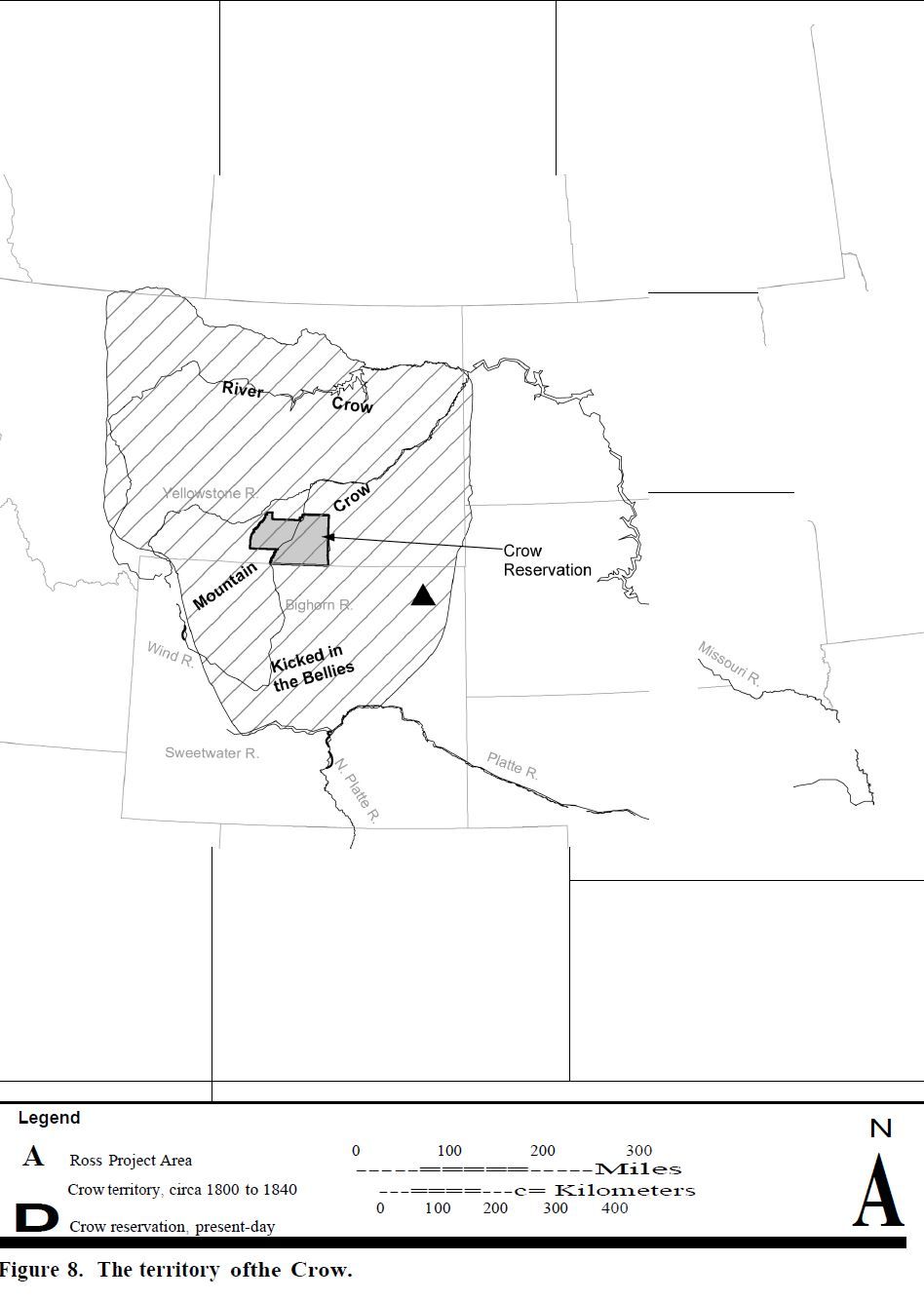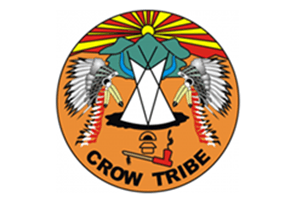The Crow speak a Siouan language that is closely related to the Hidatsa. It is generally believed that the Crow originated near the Bear Paw Mountains at Three Forks on the Missouri River and separated from the Hidatsa and moved west onto the Plains region during the 1500s to 1600s, as suggested through linguistic evidence (Hollow and Parks 1980). Although considered separate tribes in today’s world, the Crow and Hidatsa continue to speak mutually intelligible languages with each other.
The Crow consisted of three groups, two of which separated prior to historic times (Voget 2001). The River Crow, the “wirrê sape re,” were considered the original descendants of the Hidatsa proper while the Mountain Crow, the ašaraho’, were ancestors of the Awatixa Hidatsa (Bowers 1965; Curtis 1907-1930). The third, the Kicked-in-the-Bellies, were a smaller group that broke away from the Mountain Crow in historic times.
Although little is known in ethnohistorical literature about Crow prehistory, it is believed that the Crow were sedentary farmers and potters who lived in earth lodges along the Missouri River until about the early 1500s. After splitting from the Hidatsa between the sixteenth and seventeenth centuries, the Crow became semi-nomadic hunters, living in tipis and hunting big game.
By the 1820s, the Crow were recorded as encompassing a large land base distinct to each division (Figure 8).  The Mountain Crow were recorded as hunting in the Big Horn, Middle Yellowstone, Upper Tongue, and Powder River basins and into the Big Horn, Absaroka, Beartooth, and Wind River mountain ranges (Voget 2001). As they moved into the area they likely displaced some of the tribes making use of the area, including the Shoshone-Comanche, and Kiowa. By 1850, the Crow were ranging as far south as Fort Laramie, and controlled most of the northeastern Wyoming (Smith 1983). The River Crow ranged over Montana in the lower Yellowstone River and north to the Marias and Milk rivers with fall and winter hunting grounds established in Judith Basin (Voget 2001). All bands of the Crow would unite in the spring and summer for hunting. After 1850, neighboring tribes such as the Sioux, Cheyenne, and Arapahoe began to encroach on Crow territory, likely pressured by continued western expansion by U.S. settlers (Smith 1983).
The Mountain Crow were recorded as hunting in the Big Horn, Middle Yellowstone, Upper Tongue, and Powder River basins and into the Big Horn, Absaroka, Beartooth, and Wind River mountain ranges (Voget 2001). As they moved into the area they likely displaced some of the tribes making use of the area, including the Shoshone-Comanche, and Kiowa. By 1850, the Crow were ranging as far south as Fort Laramie, and controlled most of the northeastern Wyoming (Smith 1983). The River Crow ranged over Montana in the lower Yellowstone River and north to the Marias and Milk rivers with fall and winter hunting grounds established in Judith Basin (Voget 2001). All bands of the Crow would unite in the spring and summer for hunting. After 1850, neighboring tribes such as the Sioux, Cheyenne, and Arapahoe began to encroach on Crow territory, likely pressured by continued western expansion by U.S. settlers (Smith 1983).
The Crow are thought to have acquired the horse around A.D. 1730 (Haines 1938). They might have obtained horses from the Comanche and possibly the Nez Perce (Morgan 1959; Bradley 1896-1923), but it has also been documented that they may have acquired them from the Shoshone (Haines 1938). Once mounted on the horse, the Crow became integral trading partners with a number of tribes. By the late 1800s all three divisions of Crow had established trade relations with western and Northern Plains tribes, which included the Eastern Shoshone, Comanche, Nez Perce, and Flathead, and expanded their trade among the River Crow, who were more sedentary than the mounted Mountain Crow. Other tribes along the Upper Missouri River, such as the Mandan, Hidatsa, and the Arikara, provided necessary trade goods that further created extensive trade networks that brought on good relations with early European traders and the U.S. government in historic times (Algier 1993).
The role of the Crow as middlemen in trade evolved into diplomacy and cultural mediation with early European settlers. Beaver pelt trade was thought to be their first participation with the American Fur Company trading posts at Fort Cass and subsequent forts in the region (Algier 1993:87). The Crow, at one time, occupied areas in the Powder River Basin along the Bozeman Trail. The treaties of 1851 and 1868 established the boundaries of the Crow Reservation. Land sales over the years have significantly diminished Crow lands and the reservation is now severely partitioned, or “checker boarded,” to such an extent “that the overwhelming majority of Crow Indian land is under the control of white farmers and ranchers” (Old Coyote 2005).
After their transition to nomadic hunting and gathering, the Crow relied heavily on buffalo as their primary meat source. The Crow hunted mostly from horseback, unless the snow was too deep, when they will make use of firearms (Denig 1961). This was supplemented with plant foods, such as biscuit root and prairie turnip, and other plant varieties (Hart 1992; Voget 2001). Other big game hunted included elk, deer, antelope, mountain sheep, and bear. Buffalo, elk, and deer were all hunted by the surround and jump method (Frey 1987; Frison 1979).
Women processed most of the big game animals and fashioned certain domestic items, such as bowls, from box elder and spoons and cups from mountain sheep or buffalo horn (Voget 2001). Although meat was the primary focus of the Crow diet, horticultural items, like corn and squash were often traded from the Hidatsa (Frey 1987).
Spirituality played an integral part in the daily lives of the Crow with much of the praying, vision quests, and ceremonies oriented toward obtaining spiritual power. Among a number of spirits prevalent in the Crow belief system, the Sun, referred to as “father,” represented the most powerful spirit. The Crow never failed to make prayers and offerings to the Sun during ceremonies (Voget 2001).
Spiritual power, or medicine power, was essential to the success of the Crow. This power was embodied in the medicine bundle and could be attained by individuals through a variety of means. The most important of these included the Tobacco Planting ceremony, the Sun Dance, and the vision quest.
The Tobacco Planting Ceremony was said to have been introduced by No Vitals, a famous Crow leader at the time the tribe split from the Hidatsa. No Vitals was instructed to seek out the sacred tobacco plant at Devils Lake in eastern North Dakota. The plant had the power to help the Crow be successful in war; its worship was required to fulfill their destiny (Denig 1961 in Voget 2001).
Like many Plains tribes, the Crow practiced the Sun Dance. The Crow version of the Sun Dance appears to be a modified version of the Eastern Shoshone Hide Beating Dance (Voget 2001). The entire tribe participated in the dance to focus their combined medicine powers to achieve victory or revenge against their enemies. The dancers formed around an individual who had pledged himself to avenge some wrong. The pledger danced around a Sun Dance medicine bundle containing a manikin. Young men who had pierced themselves or who dragged buffalo skulls behind them, danced around the pledger, hoping to receive some of the medicine power. The ceremony concluded once the pledger witnessed that the manikin had turned black indicating that his revenge had been fulfilled (Voget 2001).
The vision quest played an important role, particularly among young men, in obtaining spiritual power. UW (2003:29-31) has summarized the vision quest process:
Vision quests were conducted individually, by young men, in an effort to obtain spiritual power. These were carried out in special places, such as Pompey’s Pillar along the Yellowstone River, or summit points in the Bighorn Mountains. Fasting, going without sleep, and bodily mutilation might be used to force potential spiritual donors to take pity upon the seeker. Guardian spirits were usually supernatural manifestations of animal species, but could also be other sorts of beings. Most common of these were Little People, the belief in which remains pervasive among the Crow (Frey 1987:68). Little People were a particularly powerful and practical donor; like leprechauns they could be both generous and mischievous. Upon obtaining such a power, one entered into a lifelong relationship with the donor, which entailed obligations as well as benefits. If instructed so to do, the recipient would display representations of the donor. This seemed to be common in the case of zoomorphic spirits, but not, for instance, Little People. The spiritual power derived in such cases was indeed a sort of “guardian spirit,” which helped one in warfare, hunting, and other dangerous activities. However, it was not a guarantor of success, and sometimes led to a sense of fatalism in combat.
The sweat lodge was a vital component of Crow prayers and ceremonies. It served as a form of spiritual preparation for the body and spirit before one could attain spiritual power through vision quests, the Sun Dance, or other rituals. The lodge itself was constructed of willow branches covered with animal hides. The steam inside the lodge was produced by pouring water over heated stones contained in a shallow pit (Voget 2001).
Within the Crow territory, Devils Tower (known to the Crow as Bear Lodge) was a location of particular importance. The Crows would go there to fast and pray, and some would create temporary shelters from stones collected along the base of the formation. Bear Lodge was an area contested by both the Sioux and the Crow, and some Crow recollect conflicts specifically over control of that area (Stone n.d.). Another area important to the Crow was Little Missouri Buttes, known to the Crow as “Two Buttes” (Stone n.d.).
Crow society was organized into territorial bands and matrilineal clans, which were generally not territorial. Lewis Henry Morgan designated this type of kinship system “Crow,” although the Crow proper are less “pure” examples of the type than are the Hidatsa (Lowie 1912:207-12; Morgan 1881). Fred Eggan (1955) speculated that Crow kinship was moving from a pure matrilineal form to a transitional one characterized by an emphasis on generation. Such changes were a response to the changing conditions of life in the historic era, with greater emphasis on mobility and war honors. Nevertheless, traditional matrilineal clans remained very important in Crow society during the historic period. Fred Voget assembles a list of twenty-two such clans from all extant sources (Voget 2001:702). Such units were important for a variety of reasons. Each was exogamous, with marriage within the clan forbidden. Each produced chiefs. Most importantly, clans were the focus of an elaborate system of reciprocity that constituted the fabric of social life. A child was born into the mother’s clan, but remained a “child of” the father’s clan. This implied a lifelong relationship of reciprocity with those he called “father” (Lowie 1935:18-19). Typically “children” supported their “fathers” with food and material wealth, while “fathers” gave supernatural protection in the form of “medicine” (Voget 1987:207-16). This culminated in “giveaways,” which involved large scale transfers of property. This aspect of the matrilineal kinship system has remained intact among present-day Crow, despite the fading of taboos on intra-clan marriage and the replacement of Crow nomenclature with English cognatic kin terminology (Frey 1987:40-58).
Crow society was pervasively egalitarian, but with considerable room for individual achievement and recognition. Chiefs held great power and influence derived from their own abilities and attainment. Such office was never hereditary. Prestige derived from two separate but integrally connected sources: supernatural power and war honors. Supernatural power could be obtained in several ways, most usually through the vision quest—involving fasting, bathing, and isolation in a powerful site, generally on a mountain peak or unusual rock formation—or the Sun Dance. Bodily mutilation was sometimes practiced in both contexts. In general these were means of appearing pitiful to spiritual beings, who would then agree to aid the sufferer. These spiritual beings in effect took the role of clan fathers, who provided supernatural aid to their wards. In return, the recipient of power would undertake certain obligations for the guardian spirit. The other path for achievement, which was considered to be inextricably connected to spiritual power, was war honors or “coup.” The prototype means of “counting coup” was to touch a powerful enemy without harming him. However, a variety of achievements in war and other contexts requiring bravery could allow one to count coup. Commonly the theft of horses was such an avenue. Even peaceful pursuits, such as bison hunting, could result in coup if bravery was evident. Coup honors were especially important to adolescents and young men, who were entitled to marry after attaining their first honors. Additional honors allowed one to rise up the ranks, eventually to chief.
Chiefs were the juridico-political leaders of local bands. They were proclaimed by a council of elders, who based their decision, which should be arrived at by consensus, on war honors and vision experiences of the candidate. A chief should be a person of strong medicine, that is, someone who was well-protected by supernatural guardians. Thus, this sacred protection could be extended to the group as a whole. Chiefs determined when and where to move camp, and other collective actions. They maintained the peace, with the aid of the band “police,” composed of members of warrior societies. These warrior societies, eleven in number for the Crow as a whole in the early historic era, were made up of young men, eager to attain honors. They handled issues such as punishing poachers, protecting the camp from enemies, and defusing feuds among camp residents. However, certain matters, such as murder and the payment of blood money, were handled by clans. In general, consensus and group discussion, at least among men with honors, was the mechanism by which Crow politics functioned (Voget 2001:704-06).
Crow lodges were typically tipis based on a four-pole structure covered with 15 to 20 buffalo hides. The tipi could typically hold eight to sixteen people. The entrance to the tipi faced east to allow the medicine bundle holder to pray to the Sun immediately upon exiting in the morning (Voget 2001).
Like other Plains tribes, the Crow made use of bags made from stretched rawhide which they either incised or painted in intricate patterns. Decorative patterns that appear to be preferred by the Crow include well-formed straight lines and vertically bisected diamonds shapes. These patterns are similar to those created by the Shoshone (Lowie 1954).
The Crow were well situated in a transitional region between the Northern Plains and the Columbia Plateau culture areas for trade with both their eastern and western neighbors. Common trade goods included catlinite pipes, bows, shells, foodstuffs, and, in the historic era, horses and Euro-American goods (Teit 1930:113-14). As UW (2003:27) describes:
With the advent of the horse, which the Crow obtained from the Eastern Shoshone or their Comanche relatives, the Crow role in trade (as well as horse stealing) became more prominent. They played a central role in the fur trade, and acted as middlemen in bringing Euro-American goods into the northern Rocky Mountains from the outposts on the Missouri (Voget 2001:696-97). The Crow were innovative in their adaptation to the horse, as seen, for instance, in the distinctive Crow saddle designs of the historic era.
The Crow likely separated from the Hidatsa and moved onto the Plains in the sixteenth and seventeenth century, but it was likely that they did not make regular use of northeastern Wyoming until the eighteenth century with the withdrawal of other tribes. The Crow use of horses for hunting and transportation allowed them to cover broad distances and until the mid- nineteenth century, the Crow appear to have made ample use of the region. Since their removal to the Crow Reservation in southeastern Montana in the mid-1860s, specific knowledge of the area is being lost. A handful of places of significance in the Powder River Basin have been documented by Timothy McCleary of UW (2003) through ethnographic interviews. Some documented stories make specific reference to geographic locations within the northeastern Wyoming, such as Bear Lodge (Devils Tower) and Two Buttes (Lower Missouri Buttes (Stone n.d.). See Figure 8 for historic territories occupied by the Crow; note that these may not include all areas used by them.


